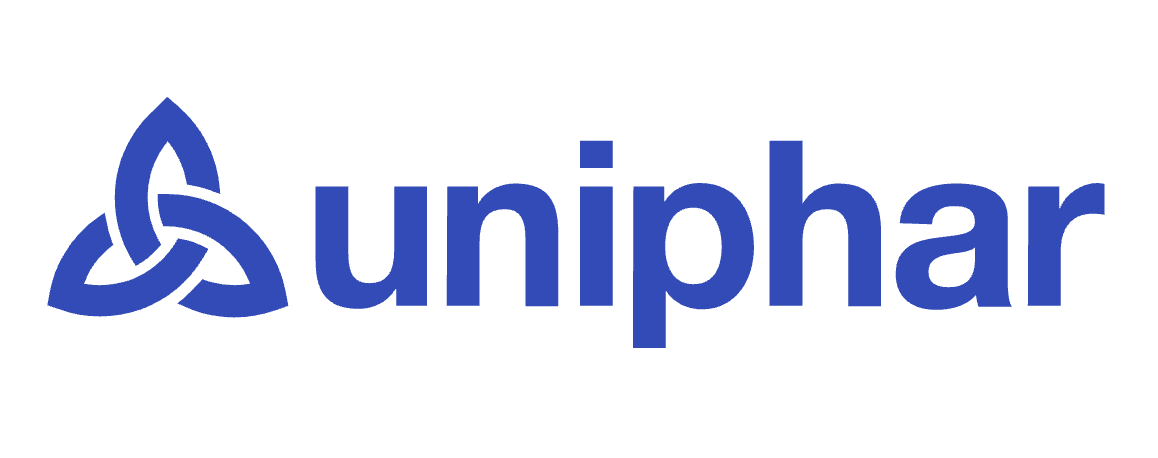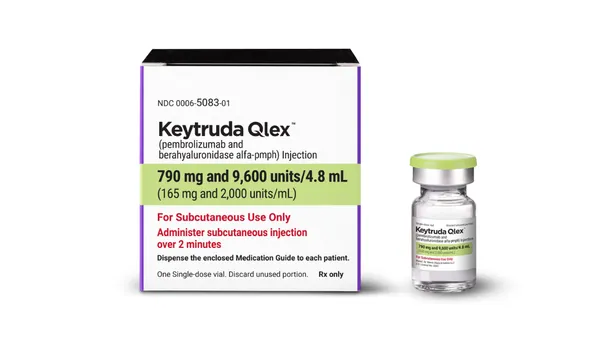CME Programs Accredited by Universities and Societies Receive Preference Continuing medical education (CME) programs created by medical communications agencies achieve a higher level of acceptance among physicians when they are accredited through partnerships with respected university medical schools or medical societies. This is the finding of a recent survey of 2,000 U.S. physicians conducted by Rogers Medical Intelligence Solutions. The survey of cardiologists, oncologists, primary-care physicians/internists, and psychiatrists collected data on physicians’ preferences in terms of CME program delivery methods, providers, treatment impact, and patient-care topics of interest. According to the survey, 93% of the physicians polled indicated that CME programs have impacted their treatment of patients. For 60% of respondents the type of provider is an important factor when choosing a CME program. The study indicates that physicians’ preferences are clear: 91% of survey respondents selected universities/medical schools as the most preferred accreditors; 57% of respondents selected medical societies; 22% of respondents selected hospitals; and 20% of respondents selected programs self-accredited by medical communications agencies. According to Rogers MIS, other factors, such as content relevance, timeliness, and the quality of speakers and editors, have been proven to affect which programs physicians select. But when focused solely on accreditation preference, CME programs accredited by well-known and well-respected universities are more attractive to the majority of physicians than any other program type. Rogers MIS concludes that medical-communications agencies (accredited, independent medical-education companies) are likely to enjoy significant advantages by building relationships with universities and medical societies, whereby the agencies’ programs are scrutinized and accredited by these academic partners rather than by the agencies themselves. Survey Indicates Large Growth Potential for Online Tools According to a recent survey conducted by Datamonitor, work-related Internet use is increasing among physicians in Europe and the United States, and the importance of online health information is growing for physicians. The 2004 Physician Insight Survey includes the results of 180 interviews with primary-care physicians in Europe and the United States regarding their Internet behavior, as well as information requirements both online and offline. Additionally, the report examines physicians’ attitudes toward the key e-health markets, including e-detailing, e-prescribing, practice Websites, and continuing medical education. The survey found that European physicians are most likely to use the Internet outside working hours, while U.S. physicians are more inclined to use the Internet during patient visits and are making greater use of e-health tools. Unhappy with the high number of mistakes made during the prescribing process, a large proportion of the surveyed physicians believe that e-prescribing may help resolve this problem. U.S. physicians are most interested in this technology, with 73% of those surveyed indicating a willingness to use e-prescribing tools in the future. Additionally, more than half of the surveyed physicians would like to use e-detailing tools in the future. Respondents indicated that they would most prefer to use interactive Websites and would not be interested in using handheld devices for e-detailing. Again, U.S. physicians are the most eager for change, with 43% stating that they would like e-details to replace live details completely. Investigative Sites and Profitability issues According to a recent Thomson CenterWatch survey, some investigative sites are successfully addressing profitability issues, despite rising salaries and declining per-patient revenue, while others continue to struggle with shrinking profit margins. Estimated site profits for 2004 averaged $79,383, an increase of 7.3% from 2002, according to the survey. Additionally, investigative sites overall have grown more dependent on grant revenue in recent years. Respondents reported that in 2004, 64% of revenue came from clinical grants, a 23% increase from 2002. The financial predicament is of particular concern to dedicated sites that have no practice revenue to fall back on. Like the larger, practice-based research operations, dedicated research sites struggle to recruit and retain the services of multiple coordinators on diminishing study grant dollars. The survey indicates that salaries are the fastest growing portion of budget allocations. Total salaries now consume two-thirds of revenue, up from one-half in 2002. Investigator salaries now account for almost 26% of revenue, up from 11% in 2002. Site directors still believe that, in general, dealing with CROs tends to be more problematic than with sponsors, particularly in terms of logistics. But the CenterWatch survey found that CROs have become less of a factor in site profits. Of the sites surveyed in 2004, 54% indicated that their profits were the same when a CRO was involved in managing a study, compared with 20% in 2002. Cardiologists and Endocrinologists Most Likely to Participate in e-Promotion According to Verispan’s ePromotion Annual Study, 73% of physicians surveyed participated in e-promotion, with 68% reporting that they participate in e-promotion as well as face-to-face promotion. Verispan’s annual study analyzes e-promotion’s role in the entire promotional picture by surveying about 1,000 physicians across 17 specialties about their behaviors and preferences regarding the Internet, e-promotion, face-to-face promotion, electronic prescribing, as well as ordering samples online. The study includes both an overview of total physician responses and an analysis of trends by physician specialty. Survey results indicated that cardiologists and endocrinologists were the most likely to participate in e-promotion along with their face-to-face activities (83% and 80%, respectively). On the other hand, 50% of orthopedic surgeons and 43% of ophthalmologists surveyed were not participating in e-promotion, with both groups citing lack of invitations as the main reason for not participating. Respondents indicated that honoraria, a convenient forum, and continuing medical education credits were the top factors influencing e-promotion activity. Europe Making Headway in Genomics and Proteomics While the United States is still the world leader in the field of advanced genomics and proteomics research, Europe is having a good deal of success in the field as well, according to a report from Frost & Sullivan’s Technical Insights business unit. The report, Drug Discovery — European Advances in Genomics and Proteomics, explains that significant government funding and the presence of large pharmaceutical companies have made Europe a major competitor in the efforts to use genomics and proteomics in drug discovery and development. Current research activities aim to go beyond the realm of human genome sequencing to expand the list of identified proteins and genes. Ultimately, this is expected to help improve understanding of disease mechanisms and facilitate development of corresponding therapeutics. But there are several issues surrounding drug target identification and validation that need to be resolved. First, the process is not only extremely time consuming, but its reproducibility is questionable because it lacks standardization. Additionally, since genetic variations elicit varied drug responses in different people, understanding the impact of single nucleotide polymorphisms (SNPs) also becomes complicated. In pharmacogenomics studies, which are used to predict an individual patient’s response to a specific drug, researchers need to identify and analyze sequence differences, or polymorphisms, and their involvement in drug response. The complexity of the human proteome also presents a significant hurdle in terms of resolving and purifying protein mixtures. Sophisticated techniques need to be developed to separate proteins that exist in varied forms corresponding to the functional needs of a cell. A British initiative to use terahertz radiation, or T-rays, is set to reveal new information about molecular structure and protein interactions through spectroscopy. Emerging technologies such as microarrays, automation, and robotics also are taking genomics and proteomics research to new heights. “Weeks, if not months, were initially required to elucidate the expression of a single gene,” says Dr. Katherine Austin, research analyst in Frost & Sullivan’s Technical Insights business unit. “Now, tens and thousands of genes can be studied in a single afternoon.” Additionally, new computer-modeling approaches such as molecular dynamics (MD), ligand docking (LD), pharmacophore modeling (PM), homology modeling (HM), and enzyme-substrate modeling (ESM) are gaining popularity. Skill-intensive assays and preparations, which were previously very time consuming, now can be achieved thousands of samples at a time and within a few hours. “These developments mark the advent of the age of personalized medicine in which the physician will no longer prescribe a drug on the ‘one size fits all’ basis and would instead customize it to the patient’s individual profile,” Dr. Austin explains. Researchers in Europe have already developed a DNA chip to analyze the effect of genetic variations on the way patients metabolize as many as 25% of all prescription drugs. This chip may also enable pharmaceutical companies to select the appropriate patients for clinical trials. Branded Drug Companies Beating Generics to the Punch In an effort to defend market share, more branded drug companies release generic versions of their branded drugs before other generic companies enter the market, according to a study by Cutting Edge Information. According to the report, Combating Generics: Pharmaceutical Brand Defense, marketing generic versions of a company’s own brand has become an increasingly popular strategy to prevent revenue loss upon patent expiration. Branded drug companies that create their own generic drugs take advantage of their existing resources to control the market and limit overall competition by making entry into the market less desirable for other generic companies. The report also indicates that most branded drug companies wait to promote their own generics until another generic company announces its intentions to enter the market. Reaching the market first not only allows the branded drug company to leverage the price of the generic market, it also maintains a portion of generic drug prescriptions, which constitute 50% of all U.S. drug prescriptions. “If a pharmaceutical company’s generic subsidiary can be first to market, the company essentially retains devalued market share for its off-patent drug,” says Jon Hess, senior analyst for Cutting Edge Information. “With patents for drugs such as Prevacid and Zoloft set to expire in July and December 2005, respectively, generic drug makers stand poised to enter the market with competitive generic products. It will be interesting to see which generic defense strategies these brands use.” Pfizer and GSK Lead in Product Promotion to Pharmacy Directors Pfizer Inc. and GlaxoSmithKline (GSK) led the industry in promoting their products to pharmacy directors, according to the Spring 2005 Managed Care Audit Service, recently released by Health Industries Research Companies (HIRC). The semiannual report evaluates the depth and breadth of pharmaceutical company product promotion with leading health plans and is based on extensive online surveys of 59 pharmacy directors from leading health plans across the United States from July 2004 to December 2004. Nanotechnology to Improve Discovery and Delivery Nanotechnologies have the potential to improve drug discovery by allowing better imaging, including real-time imaging, which will afford researchers a deeper understanding of how biological processes are affected by a new compound and more sensitive fundamental research techniques for drug-discovery applications using dip-pen technology. Nano-enabling also will offer major improvements in microarray and fluorescent dye technologies. NanoMarkets LC’s report, Nano-Enabled Drug Discovery: Seven Technologies to Watch, examines how drug discovery will be impacted by nanotechnologies, including atomic force microscopy, near-field scanning optical microscopes, surface plasmon resonance, nanomass spectrometry, dip-pen nanolithography, nanoarrays, and quantum dots. As developers seek new drug-discovery technologies to improve R&D success rates and time to market, NanoMarkets expects the identified technologies will offer substantial new business revenue over the next few years. Additionally, nanotechnology is expected to enhance nearly every common mode of drug delivery. Six Opportunities in Nano-Enabled Drug Delivery Systems, a second white paper from NanoMarkets, examines drug-delivery systems in which nanotechnology are likely to have an impact. These are injectable delivery systems, implantable delivery systems, oral delivery systems, topical delivery systems, transdermal systems, and toxin removal. Research suggests that nanotechnology will improve these systems to lower drug toxicity, reduce the cost of treatments, improve bioavailability, and extend the economic life of proprietary drugs. The nano-enabled drug-delivery market is expected to be one of the first true nanomedicine markets, offering participants significant revenue opportunities. Physician Preferences: CME Programs 91% of physicians prefer university (medical school) accredited programs 57% of physicians prefer medical society accredited programs 22% of physicians prefer hospital accredited programs 20% prefer medical-communication agency accredited programs Note: The total sum exceeds 100% because the surveyed physicians had the option of indicating more than one preference. Source: Rogers Medical Intelligence Solutions, New York. For more information, visit rogersmis.com. Physician Attitudes: e-Promotion 81% of physicians surveyed earned CME credits online in 2004, compared with 75% in 2003. In 2004, half of the respondents indicated that they earn between 1% and 20% of their CME credits online. 16% of e-promotion activities offered CME credits in 2004, an increase of 4% from the previous year. 47% of physicians prefer virtual details — technology-enabled promotions, usually self-guided, during which participants cannot see or speak with the activity conductor — to other e-promotion activities. 60% of e-promotion activities held in 2004 were virtual details. 12% of physicians surveyed preferred the live interaction of a video detail compared with other e-promotion efforts. The majority of physicians plan to continue and even increase their participation in e-promotion activities. More than half of physicians reported they would continue their current level of participation in e-promotion in the next six months; 43% reported that they would increase participation; and only 1% indicated that they would decrease further use. Source: Verispan, Yardley, Pa. For more information, visit verispan.com. Dr. Katherine Austin These developments mark the advent of the age of personalized medicine in which the physician will no longer prescribe a drug on the ‘one size fits all’ basis and will instead customize it to the patient’s individual profile, says Dr. Katherine Austin, Research Analyst in Frost & Sullivan’s Technical Insights business unit. Jon Hess If a pharmaceutical company’s generic subsidiary can be first to market, the company essentially retains devalued market share for its off-patent drug, says Jon Hess, Senior Analyst for Cutting Edge Information. Jeffrey O. Boily CME programs accredited by well-known and well-respected universities are more attractive to the majority of physicians than any other program type, according to Jeffrey O. Boily, President and CEO, Rogers Medical Intelligence. Strategies for Pharmaceutical Brand Defen e Switching patients to a line extension Flanking generics and other licensing and distribution agreements Defensive pricing Increased DTC advertising and patient outreach, compliance, and retention activity Rx-to-OTC switching Source: Cutting Edge Information, Durham, N.C. For more information, visit cuttingedgeinfo.com. Spring 2005 Managed-Care Audit Findings Most frequently encountered pharma companies 1. Pfizer Inc. 2. GlaxoSmithKline 3. AstraZeneca 4. Eli Lilly and Co. 5. Merck Most promoted pharmacologic classes 1. Dyslipidemics 2. Renin-angiotensin-aldosterone system inhibitors 3. Reuptake inhibitors 4. PPIs 5. Hypoglycemic agents, oral Most frequently promoted drugs 1. Crestor 2. Vytorin 3. Bextra 4. Cymbalta 5. Celebrex Source: Health Industries Research Companies (HIRC), Santa Cruz, Calif. For more information, visit hirc.com. Mike Moradi The nano-enabled drug-delivery market will be one of the first true nanomedicine markets, says Mike Moradi, Analyst, NanoMarkets LC. Follow up Cutting Edge Information, Durham, N.C., provides research and consulting to the pharmaceutical and financial services industries. For more information, visit cuttingedgeinfo.com. Datamonitor Plc., New York, with global headquarters in London, is a business information company. For more information, visit datamonitor.com. Frost & Sullivan, San Antonio, Texas, is an international growth consultancy. For more information, visit frost.com. Health Industries Research Companies (HIRC), Santa Cruz, Calif., is an independent, nonpartisan organization that conducts strategic market research on a wide variety of healthcare markets. For more information, visit hirc.com. NanoMarkets LC, Sterling, Va., provides market research reports, customized industry analyses, and general market commentary for companies looking to capitalize on nanotechnology-based opportunities. For more information, visit nanomarkets.net. Rogers Medical Intelligence Solutions, New York, provides information and insights on the latest medical and clinical research worldwide. For more information, visit rogersmis.com. Thomson Centerwatch, Boston, provides information services used by patients, pharmaceutical, biotech, medical-device companies, CROs, and research centers around the world. For more information, visit centerwatch.com. Verispan, Yardley, Pa., a healthcare informatics joint venture of Quintiles Transnational Corp. and McKesson Corp., provides information products and services to the healthcare industry. For more information, visit verispan.com.
An article from











